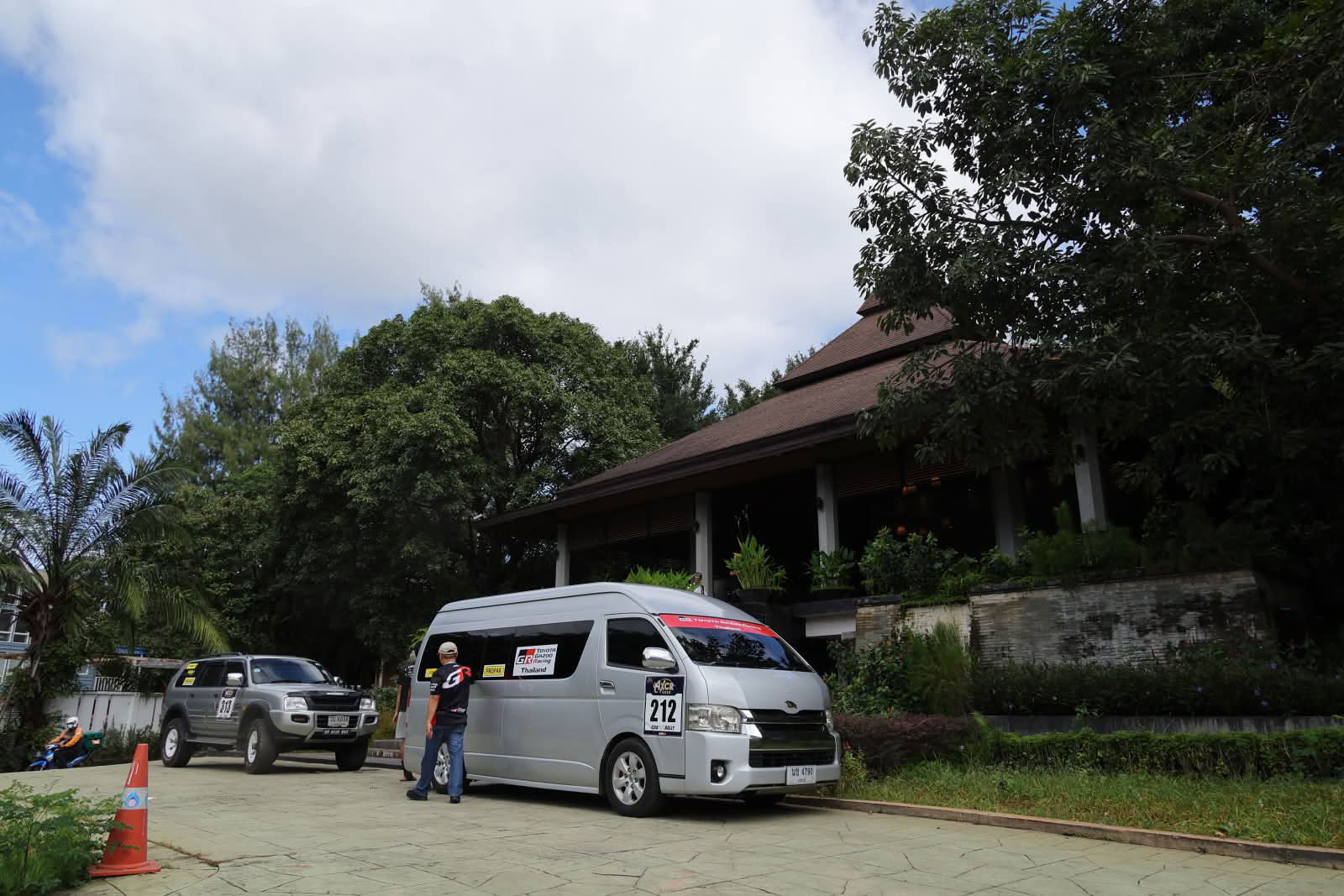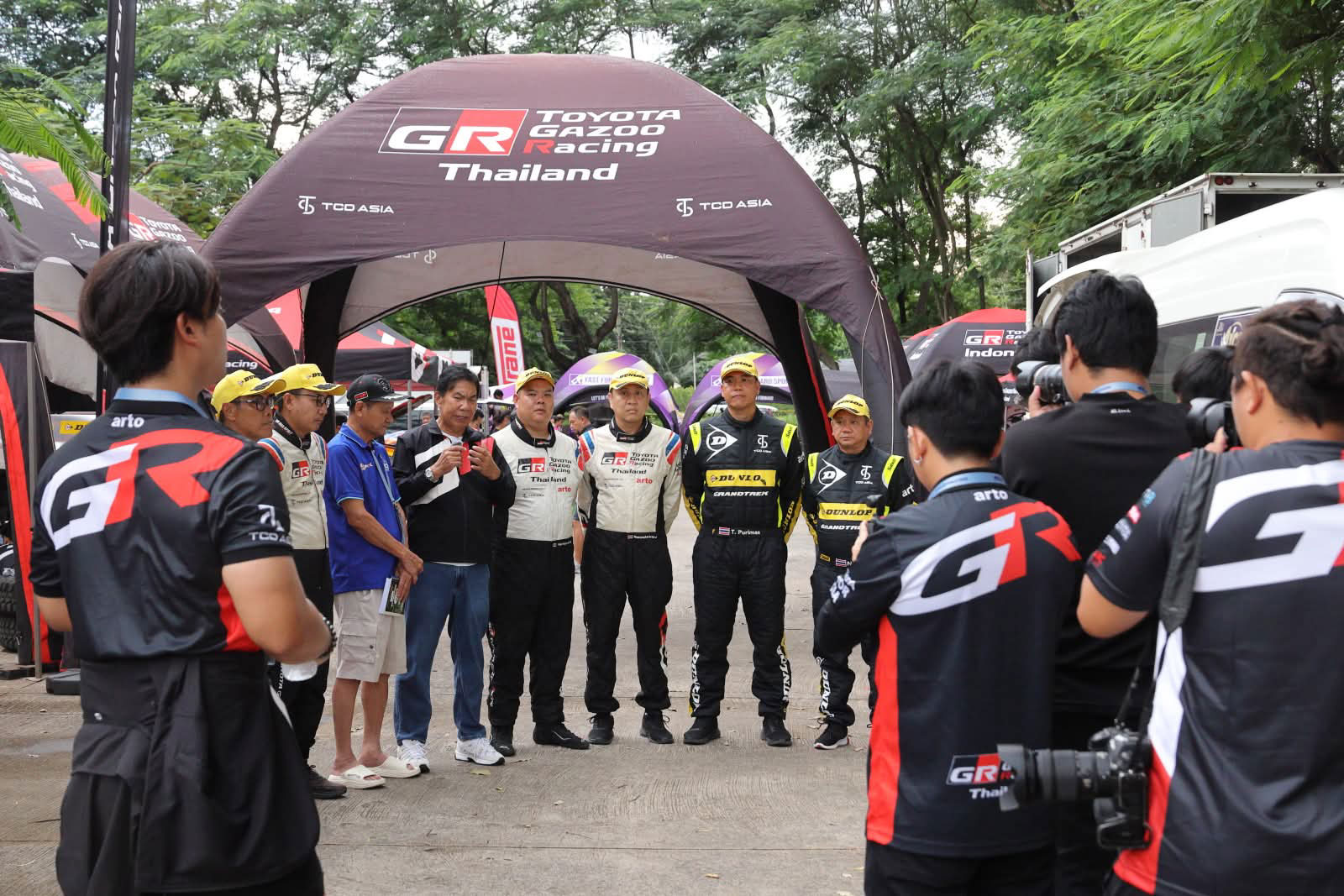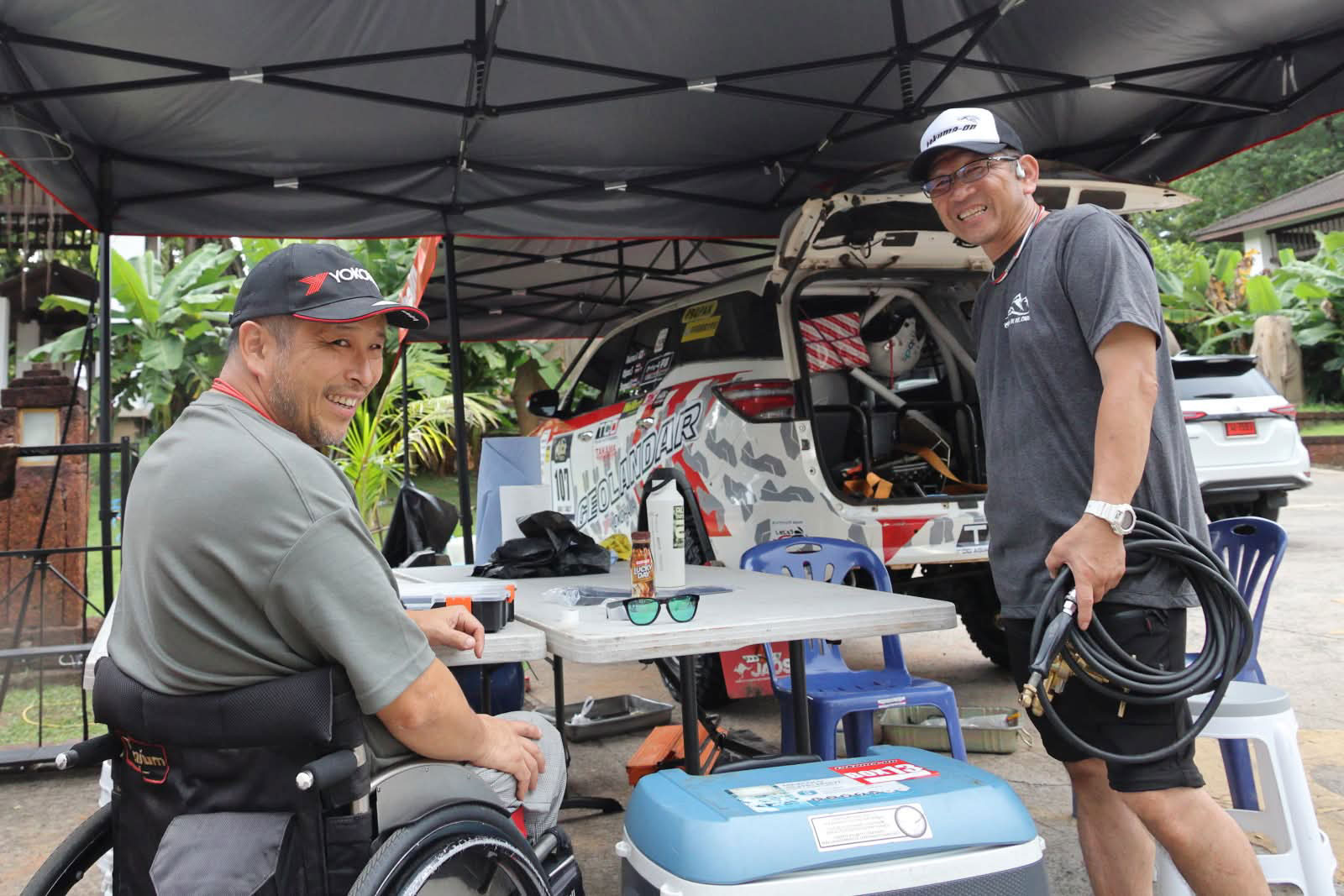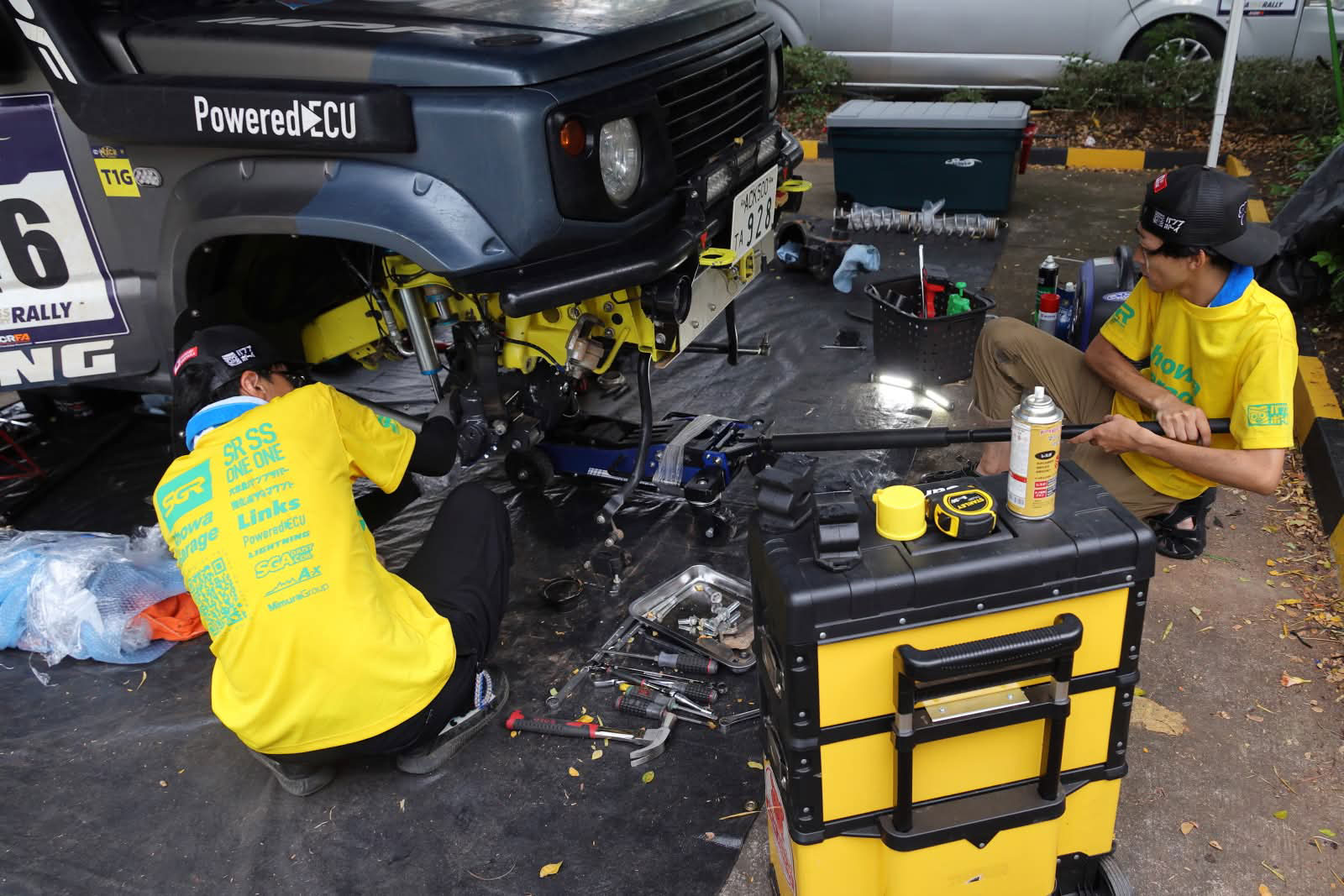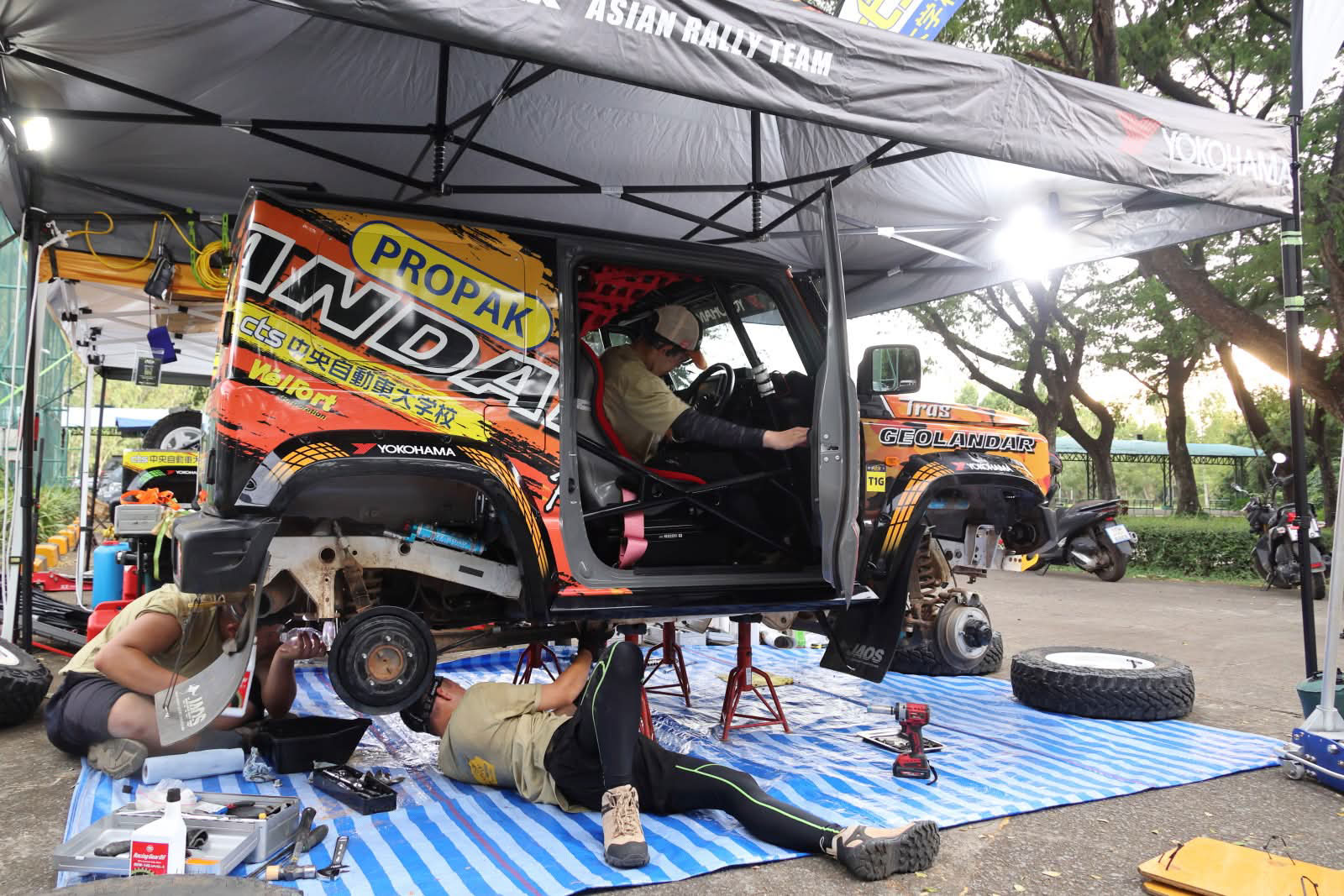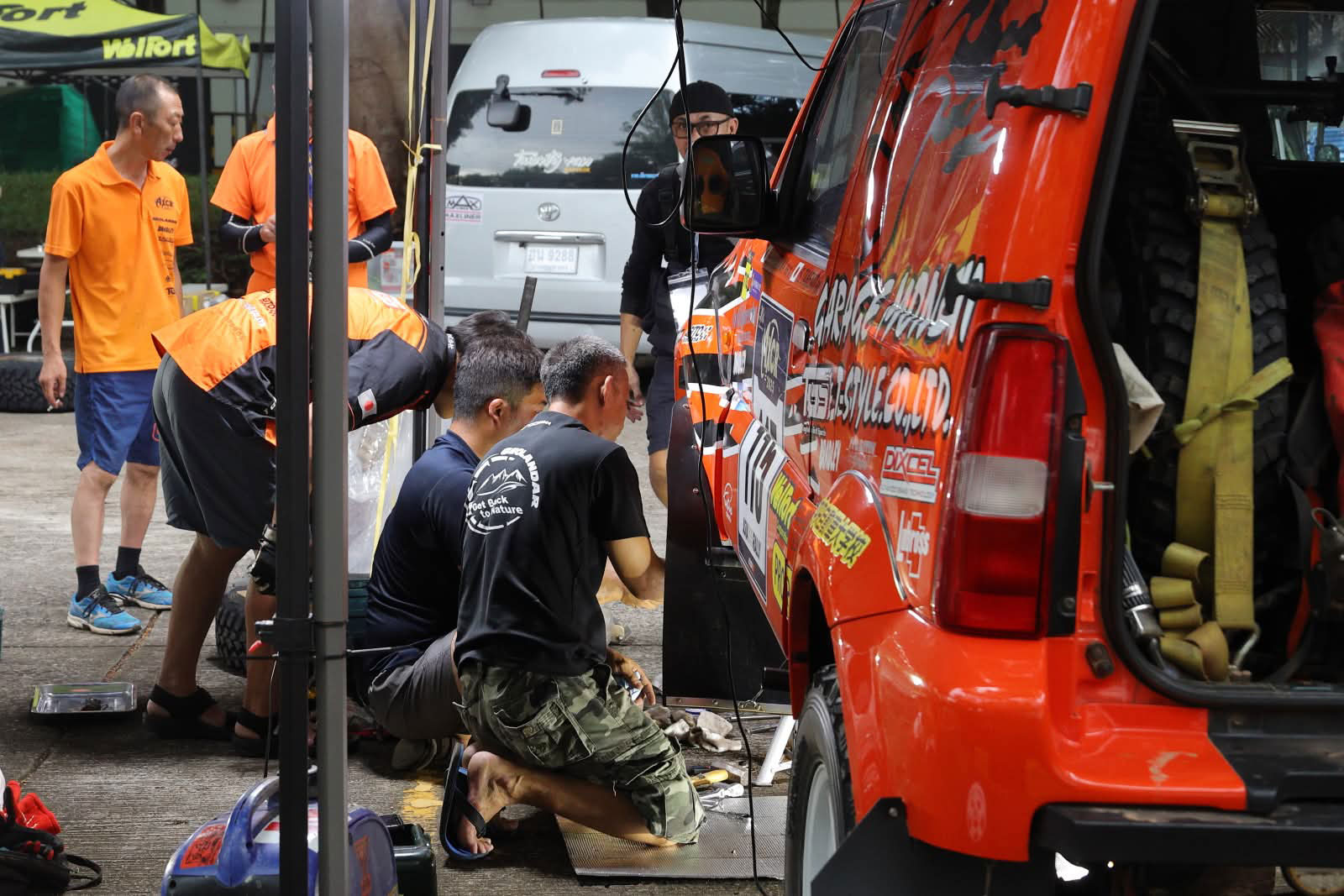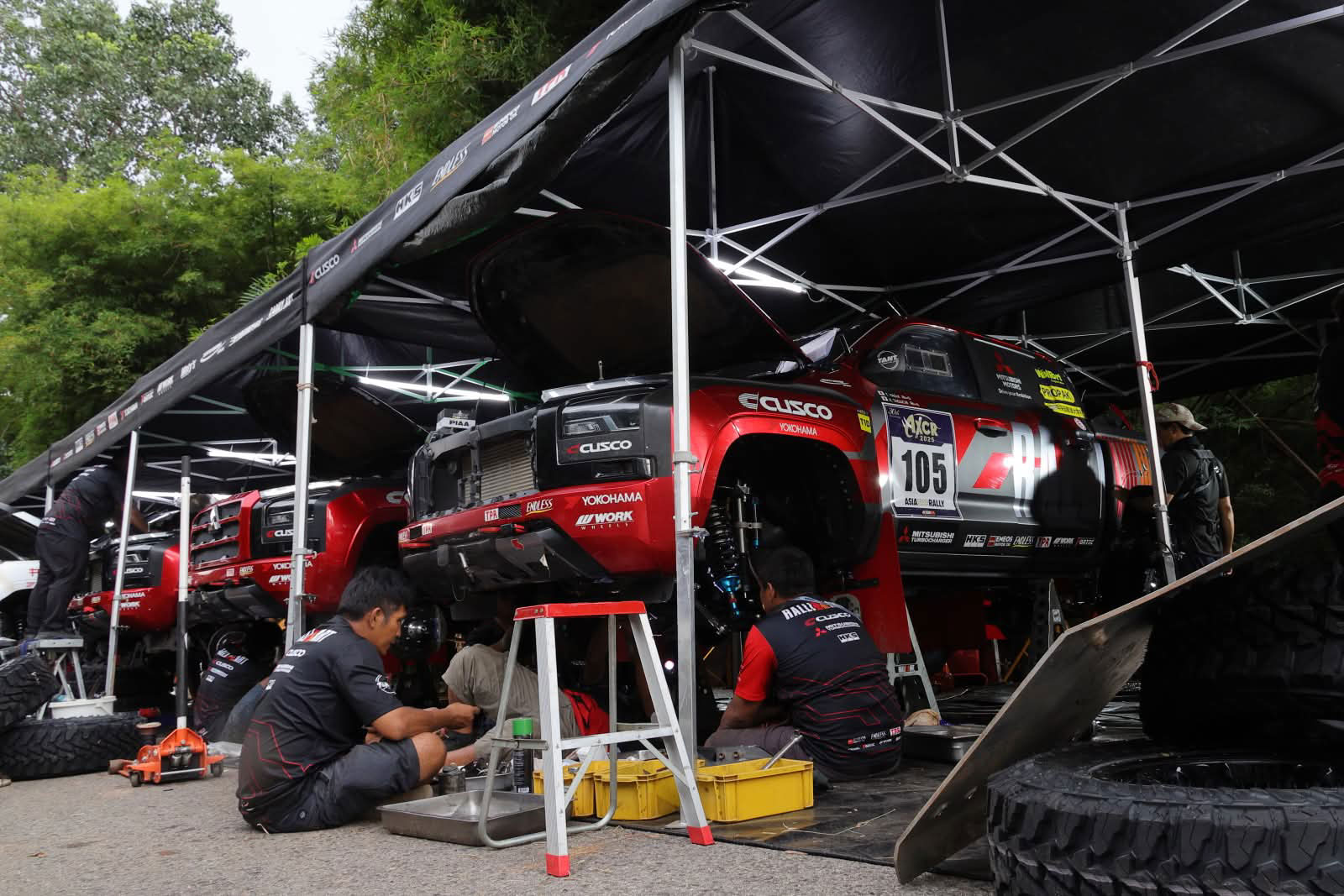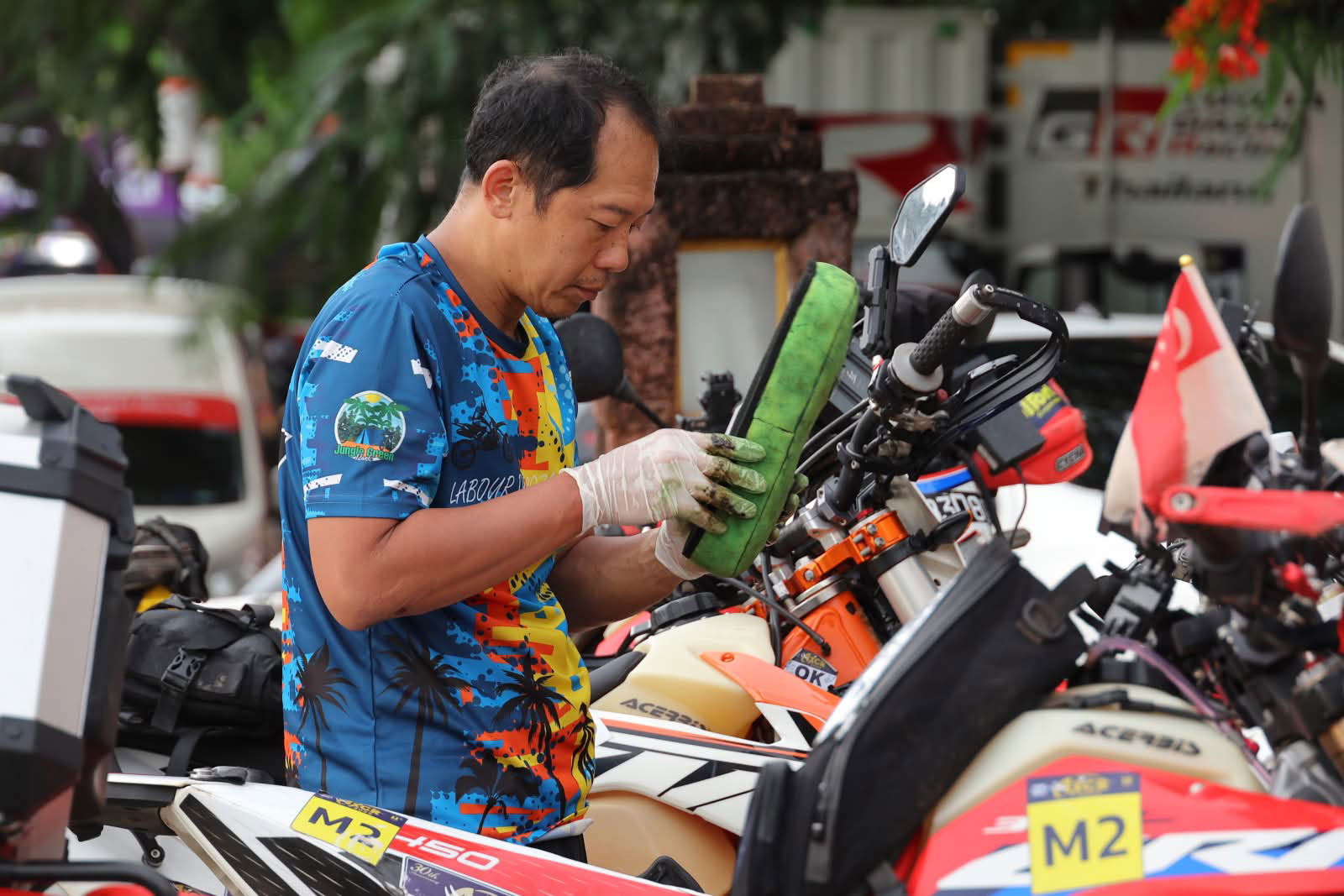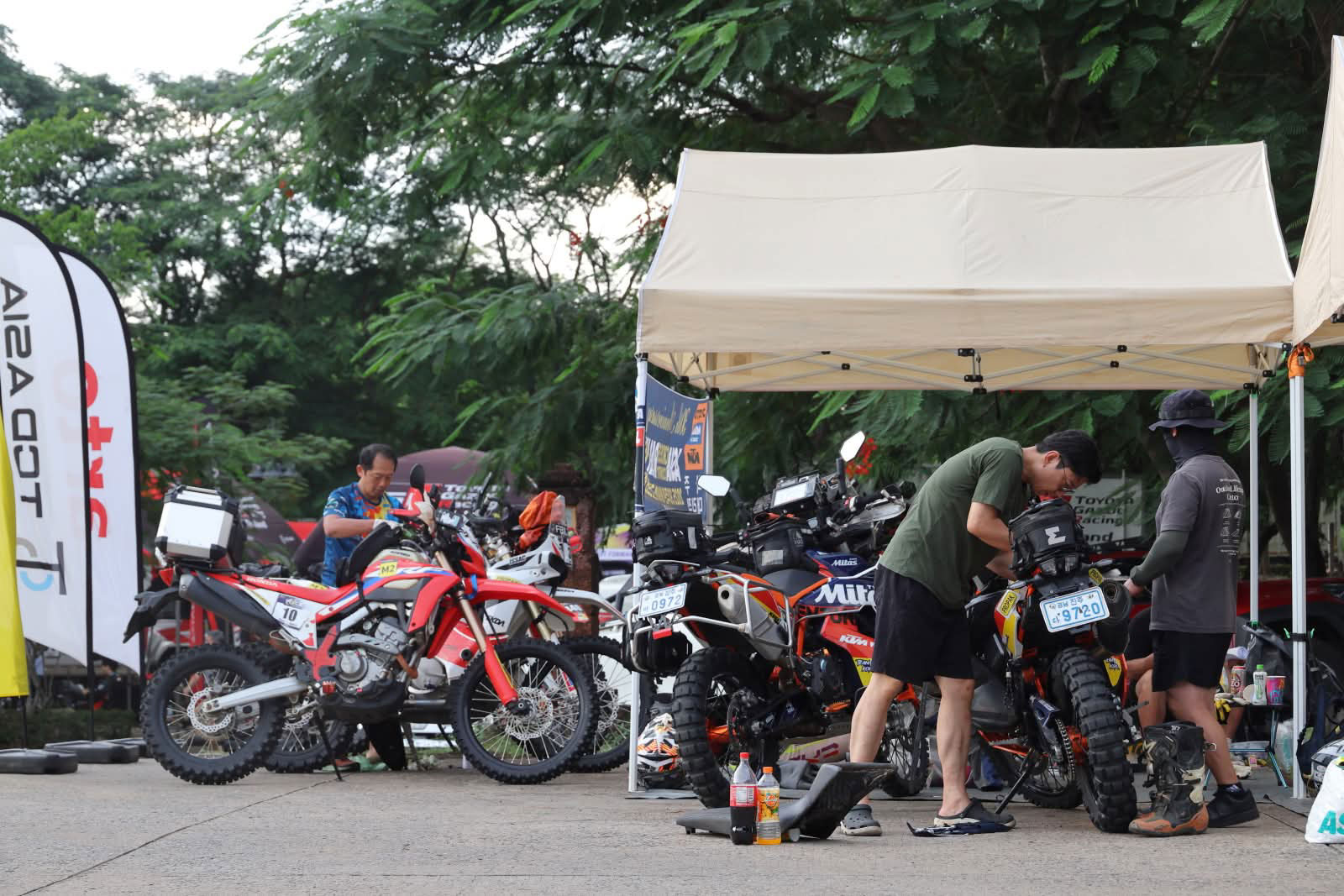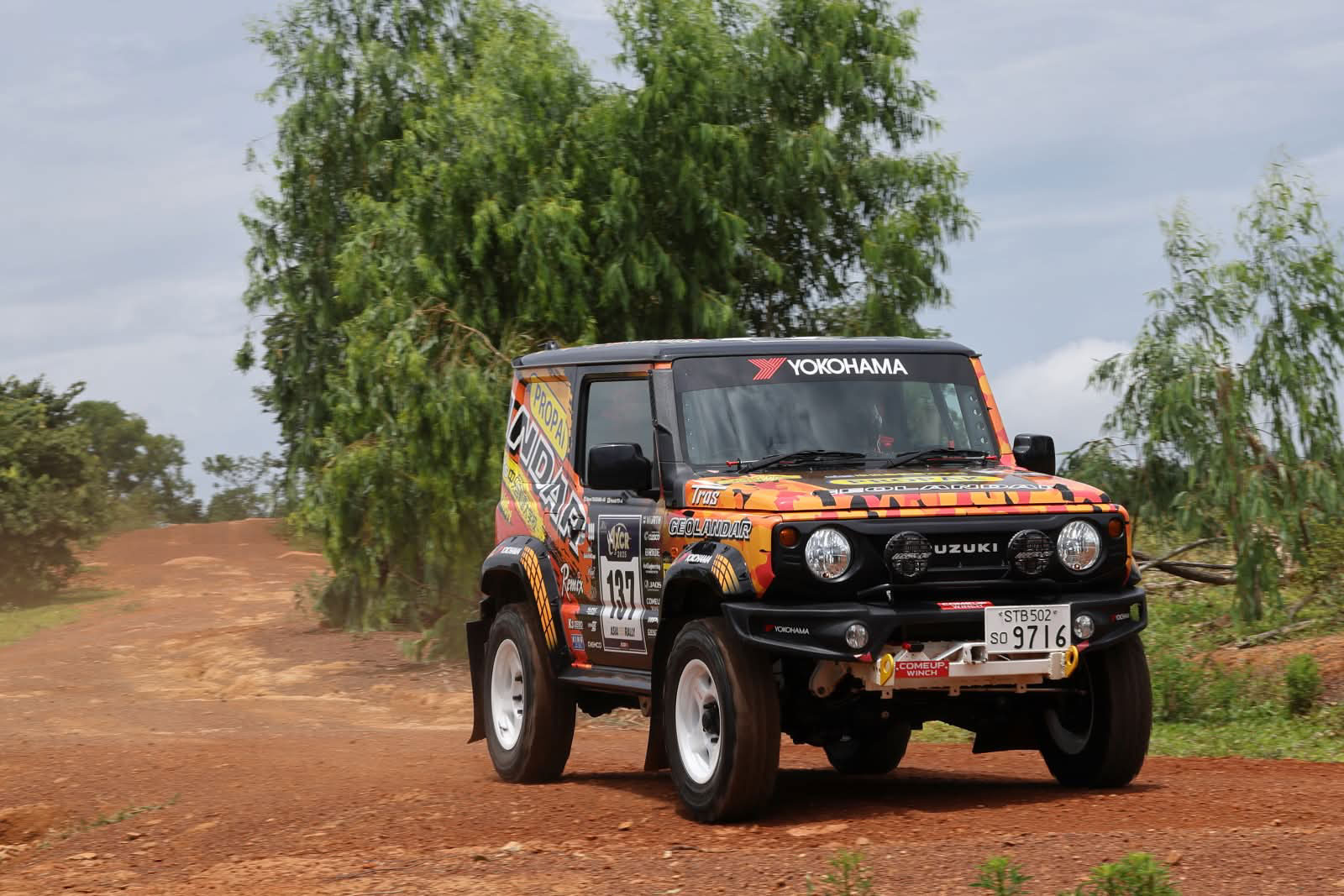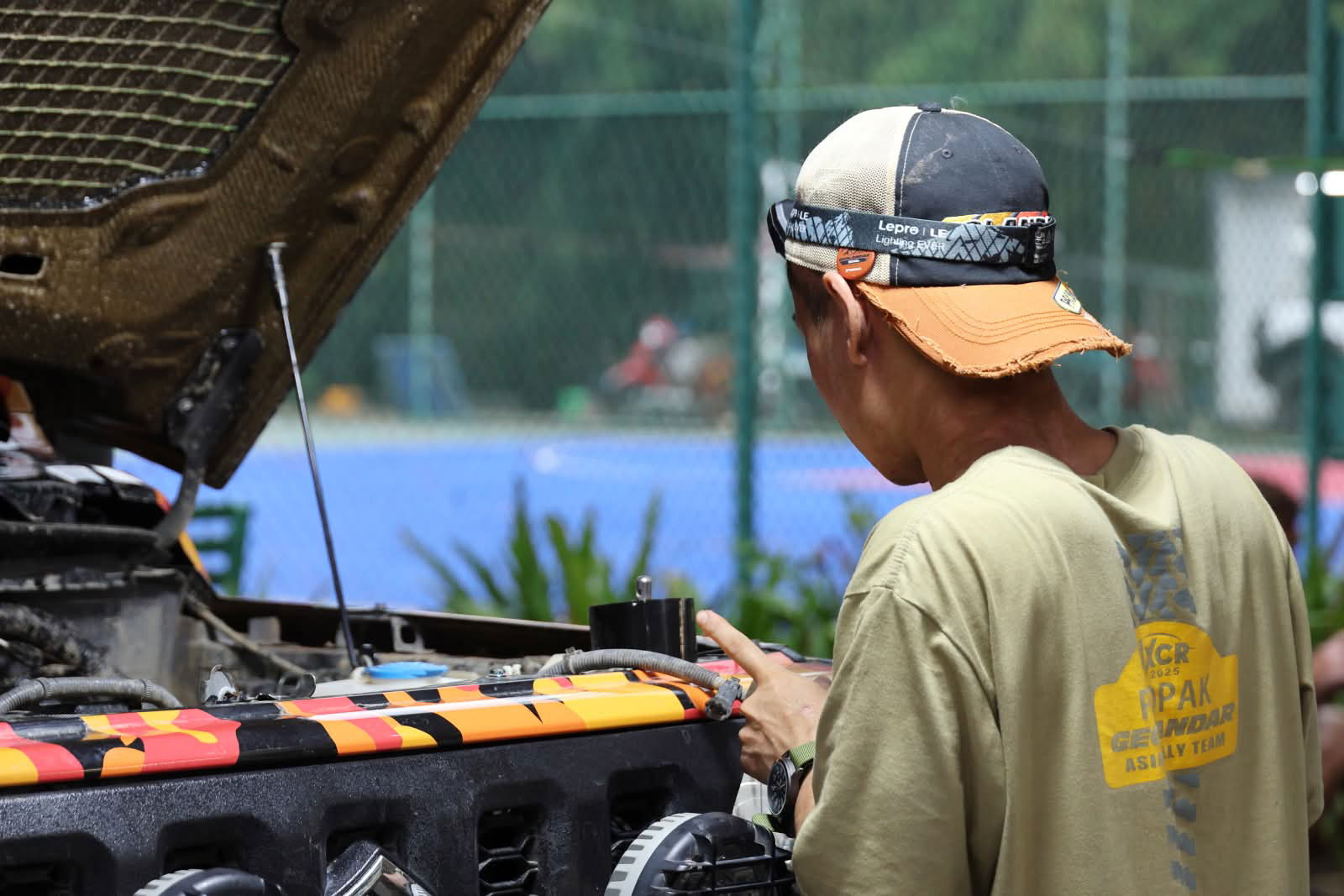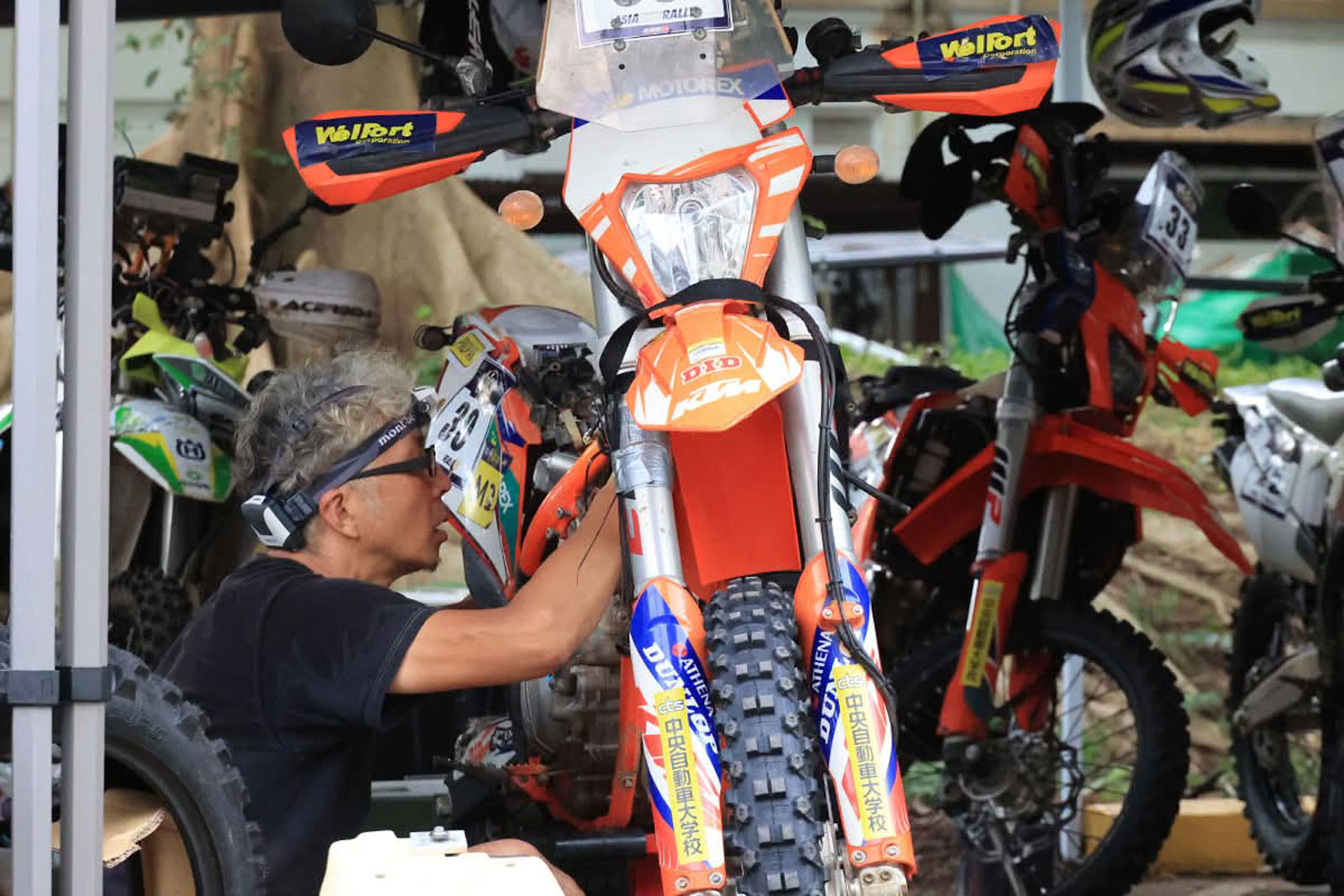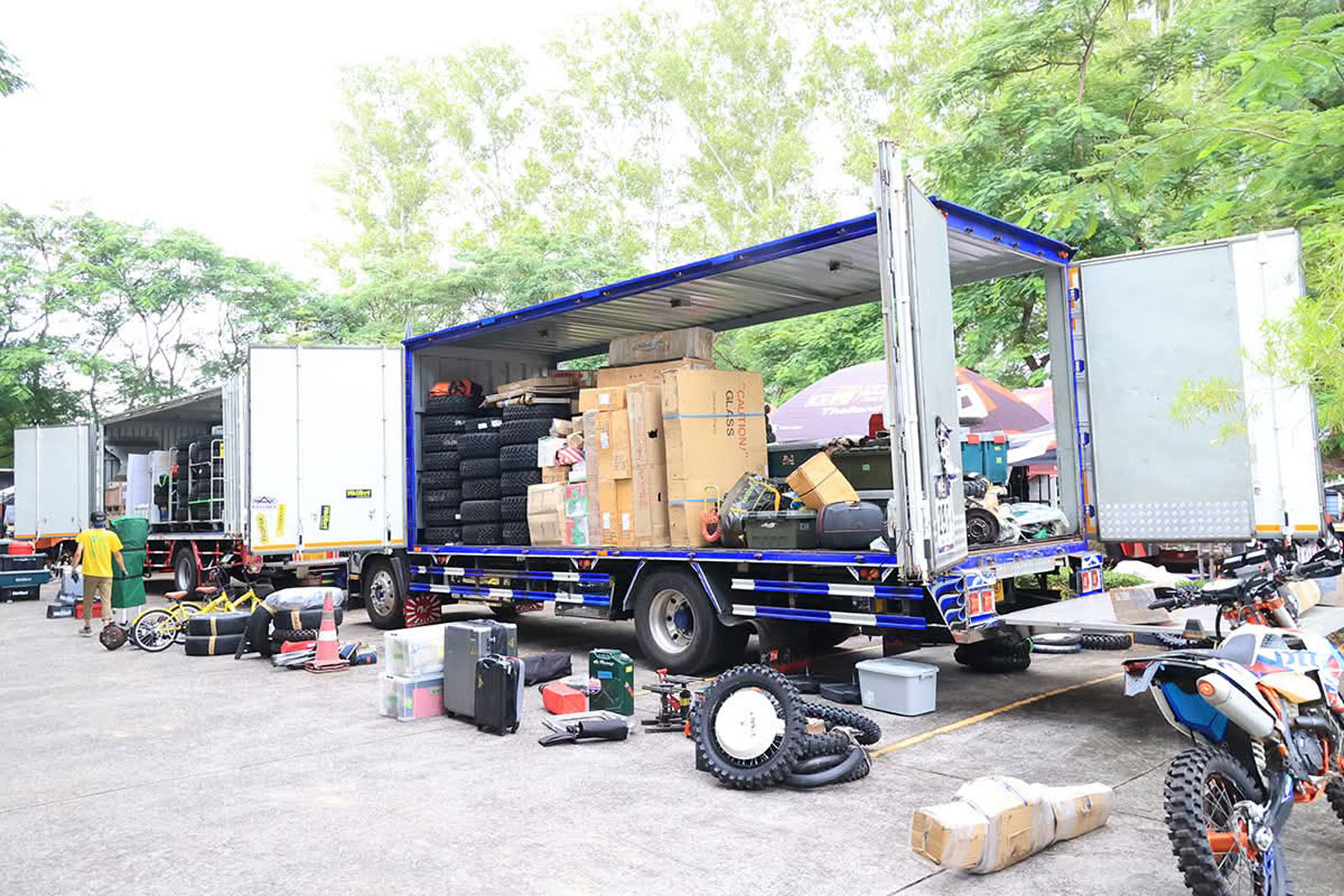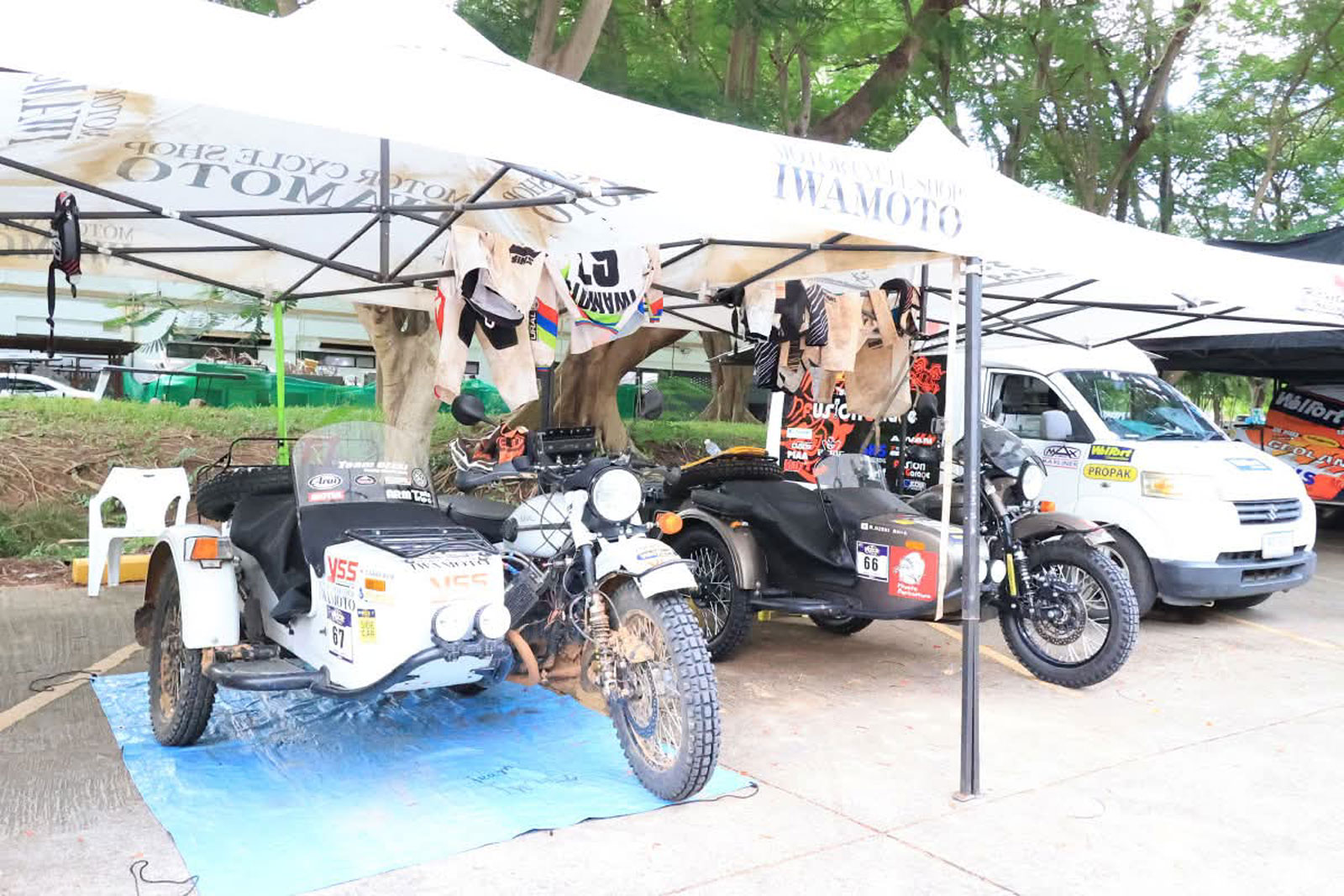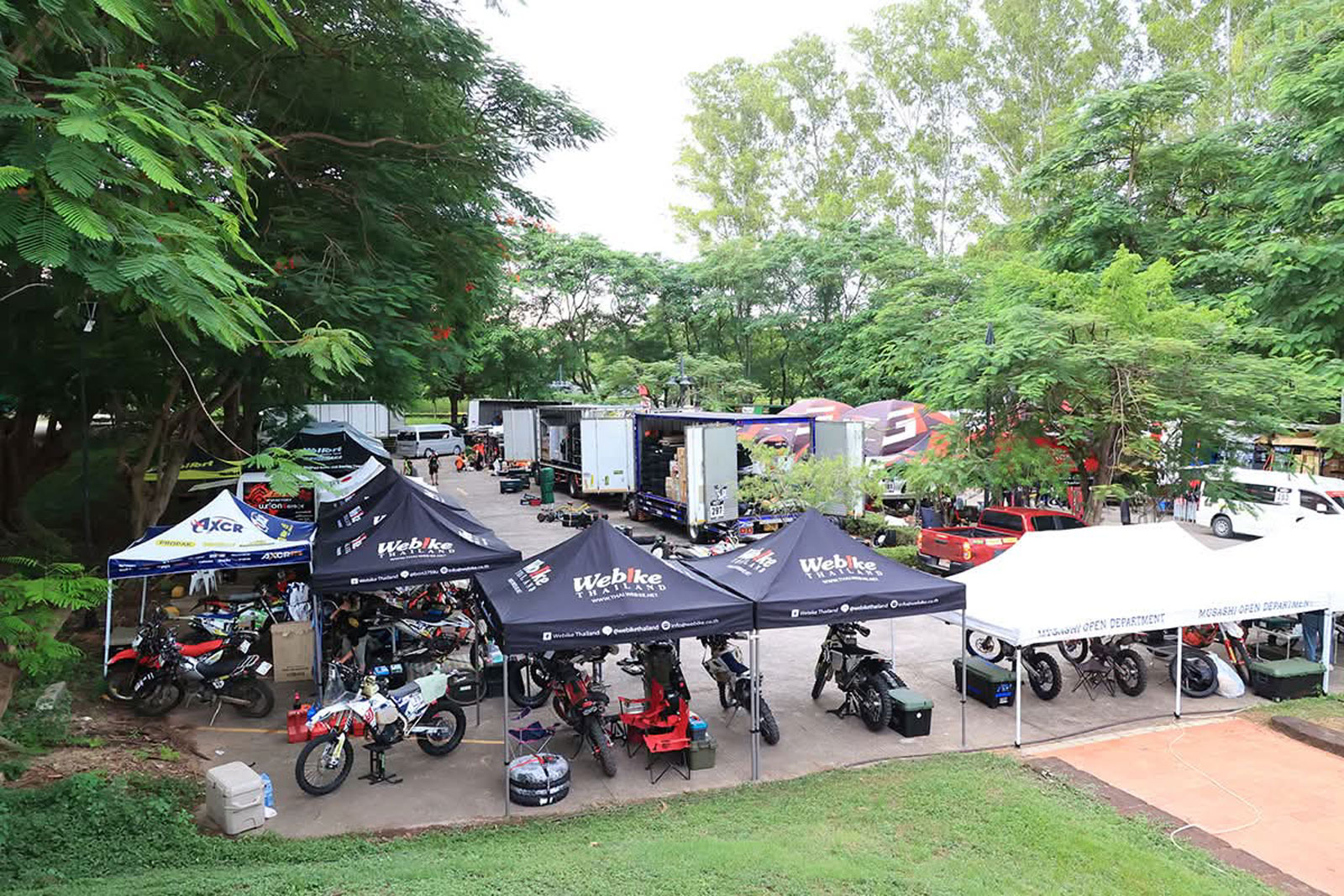

LEG4
Tuesday, August 12, Prachinburi
How far can damaged vehicles be repaired?
The battle of the service crew on the rest day
On the fourth day of competition, the SS scheduled to take place near the Cambodian border was cancelled for safety reasons, and the rally became a rest day.
Those who have known AXCR for a long time may think, ‘Just change the route.’ Indeed, there was a time when the course could be changed quickly. But times have changed. To conduct an SS, a safety book must be created two months in advance, and all plans, including the placement of police officers, must be submitted. Given the escalation of the conflict at this time, there were no other options. Rather, we should be grateful that the event itself was not cancelled.
On this day, the four-wheel teams spent most of the day on repairs and maintenance. They were not sightseeing just because it was a rest day. First, they had to move. The maintenance pits were moved from Nakhon Ratchasima to a hotel in Prachinburi, where the service crew continued to repair the vehicles.
There were countless items requiring repair and maintenance. This was because the three-day battle had been so intense. Vehicles that couldn’t stop on the dusty surface collided with the car in front. Countless vehicles had their front differentials damaged by severe bumps and jumps, and there were a number of vehicles with broken front suspensions and tyres pointing in the wrong direction. Many of these issues couldn't be solely attributed to driver error as some vehicles had their axles suddenly break due to metal fatigue while driving. There were also numerous cars that flipped over after getting their wheels caught on stumps.
Other issues include shock absorbers or panhard rod ends coming loose, steering abnormalities, radiator, transfer case failures, speedometer, air conditioning, wiper malfunctions, broken window glass, replacing broken mirrors, or straightening bent body panels. All these issues must be repaired as much as possible to prepare for the second half of the race.
A fierce competition between five students and four female athletes!
In fact, five students from Japan are participating in this event as service crew members. These students have been studying for four years at Central Automobile College (CTS) to become certified automotive technicians. The vehicles they are responsible for are two new Jimny models from the PROPAK GEOLANDAR ASIAN RALLY TEAM. Both vehicles have been repaired, modified, and maintained by the students and their peers since they became fourth-year students in the spring.
Among these, the pickup-type vehicle driven by Roslyn SHEN (Taiwan) and Nada SIMARAKS (Thailand) of the #136 PROPAK GEOLANDAR ASIAN RALLY TEAM underwent significant modifications, including frame cutting and wheelbase extension by their senior classmates, and managed to reach the finish line despite being battered and bruised in the 2024 competition. The newly introduced short-wheelbase vehicle is the second-generation model, customised for competition based on last year's experience. In August, five fourth-year students from the CTS First-Class Automobile Maintenance Department were selected to travel all the way to Thailand for the AXCR main event.
While they may have liked to go sightseeing at Khao Yai National Park, they continued to work tirelessly on maintenance. They purchased replacement parts for broken equipment and reviewed the pit layout. There was no time to rest.
From the very first day of the competition, when one vehicle overturned, they were thrust into a round-the-clock schedule. Unlike a school where classes and work end at a dedicated time and students can go home, they found themselves in a situation where they had to devote themselves fully during all hours of the day in order to participate in the competition the next morning.
Amidst this, Mr. Hidenori Kotani, the vice principal of the school and current project leader, remarked with a smile, ‘Their movements have been changing day by day, and they are beginning to see what they need to do.’ He added, “By actually running the car they built under harsh conditions, they can check the cause-and-effect relationship between which measures were effective and which were not. It's a fortunate thing that they can deepen their learning in such a serious competitive environment.”
In fact, rather than complaints about lack of sleep, the students have been making positive comments such as, “It's super fun,” “We learn a lot from vehicles that sustain more damage,” and “This is an experience we rarely get to have, so it will definitely be valuable for us.”
In reality, many of the students are very dedicated and while many initially felt uneasy about not being able to fix everything perfectly or at all, they are gradually developing the ability to adapt flexibly by experiencing methods not found in textbooks. This included implementing necessary measures within the limited time available to run the next day, even if not the standard they would have done had they had more time.
And of course, the four female drivers of the two Jimnys are also learning the harsh realities of rallying while moving forward each day. In particular, the team of Hazuki Ito and Momo Tsukishima (Japan), who drive the #137 Short Jimny, are not only making their overseas debut but also their first cross-country rally. Despite the harsh mountain roads being more challenging than imagined, they persevere together, sometimes shedding tears of frustration, and their determination is surely etched in the students minds.
While the works teams engage in intense battles at the event, we also urge you to pay attention to the huge challenge being undertaken by the small private team and their little Jimny. Will the two vehicles, carrying the students' dreams and driven by the women who have staked their rally careers on them, safely reach the finish line in Pattaya?
(Photo: Manabu Takahashi, Text: Dai Kawamura)
Moto
A brief day of rest. What do the riders do?
On the fourth day of competition, Leg 4 was cancelled as previously announced, giving participants an unexpected ‘rest day.’ Coincidentally, this day was also Mother's Day, a public holiday in Thailand. Combined with the special holiday from last Saturday and Sunday to Monday, it became a four-day weekend for Thailanders. During the journey through Khao Yai National Park, a famous tourist destination, there were traffic jams in some areas due to the large number of tourists.
Incidentally, ‘Khao Yai’ apparently means ‘Big Mountain.’ Indeed, as we moved along the road, when we reached the highest point, the view was befitting of that name. It was incredibly vast and deep.
On this day, with only the move from the Leg 3 hotel to the Leg 4 hotel, the riders took their time over breakfast to align with the 11:00 check-out time, and methodically carried out preparations such as bike maintenance for the ride to the next hotel, sorting and organising luggage to be loaded onto the transport truck and support car (including large items like tyres, tools, and maintenance-related equipment, as well as personal belongings like clothing for accommodation).
A minor detail unrelated to the race: check-in at the next bivouac hotel is at 3:00 PM, and depending on the route, it takes roughly two and a half hours to arrive, leaving some spare time.
Riders arrive early before check-in to secure parking spaces at the next hotel’s paddock area, working together to claim spots. Teams with tents wait for the later-arriving support cars, so they leave something to mark their spot. It’s akin to the summer tradition of fireworks festivals in Japan, where people lay blue tarps along permitted riverbanks.
Once check-in is complete, everyone rushes to find a laundry facility. Yes, most riders have large amounts of mud- and sweat-stained clothing which is also covered in dirt and grease.
They search online for local information or share tips about car washes they happen to find. It's almost like a competition to find the cheapest, cleanest, most user-friendly, and most friendly facility.
The fact that they compete yet are also so willing to share information with each other is fascinating, as it is completely opposite to the competitive aspect of trying to deceive, sabotage, and knock each other down to improve their rankings.
As the day comes to an end, the brief rest day fades into the evening, and everyone switches gears to prepare for the resumption of the competition the next day.
Under normal circumstances, one would have to compromise on maintenance to secure even a little sleep time, but being able to devote oneself to vehicle maintenance with ample time is something one could consider ‘lucky.’
However, no matter how much preparation is done, there is never a sense of security. Riders have experienced the shock of ‘Can that really happen?’ countless times, so they meticulously maintain their bikes to eliminate any possibility. If something happens, you just have to deal with it. Accepting that things will happen when they happen, even after doing everything possible, it’s a necessary skill to maintain a healthy mental state.
Originally, this was an eight-day non-stop gruelling competition, so some may feel unsatisfied that a ‘rest day’ was unexpectedly inserted. However, the venue is Thailand, and all the high star rated hotels can be seen as a reward.
The question on everyones mind will be, what kind of situations await on the fifth day of the event? Will there be any changes in the top riders' performance and rankings? Will there be any breakthroughs for riders struggling with map reading? And how will the weather be?
The 30th Anniversary Asian Rally will enter its second half starting tomorrow.
(Photographs and text by Zensuke Tanaka)




